Dogs
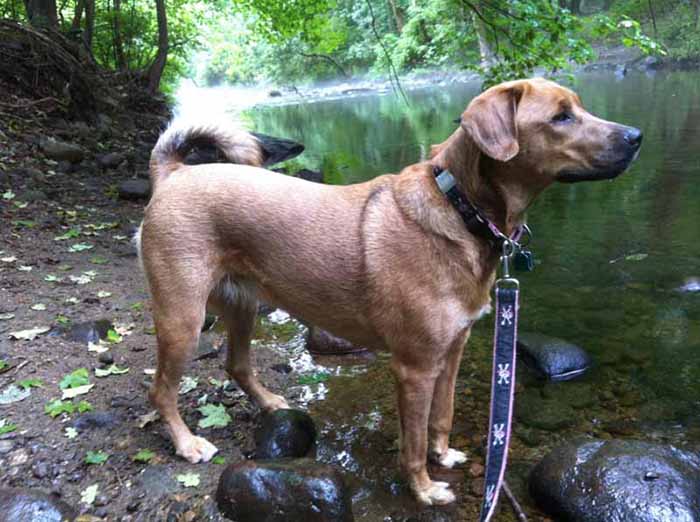
Dogs

Dogs are wonderful for healing and therapy having empathic and compassionate qualities we all embrace. They seem to have a special bond with humans that allows gives them to telepathically communicate - a skill that most people can learn if it doesn't come naturally after spend time with one's dog. Dogs can be catalysts into higher frequency experiences.


There is often a synchronicity that attracts dogs and their owners to each other. Some dogs remain with a family for a period of years, then one day they just seem to disappear in the sense of moving on to another family - the two families may or may not ever meeting. I have seen divorcing couples fight more about custody of their dog than their finances.
Some people are buried with or near their dogs. The loss of a beloved dog can be as tragic as the loss of a family member or close friend. Some believe their dog has been with them in another lifetime or may return in this one.
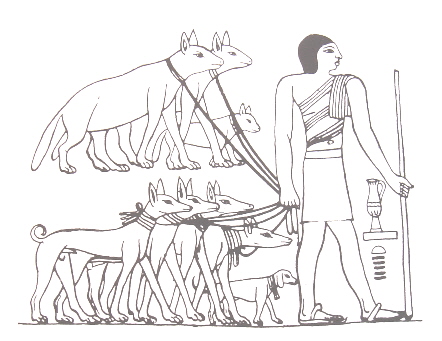
The dog was the first domesticated animal and has been the most widely kept working, hunting, and pet animal in human history. Dogs' value to early human hunter-gatherers led to them quickly becoming ubiquitous across world cultures. Dogs perform many roles for people, such as hunting, herding, pulling loads, protection, assisting police and military, companionship, and, more recently, aiding handicapped individuals. This impact on human society has given them the nickname "man's best friend" in the Western world. Read more ...
March 23

In the News ...
11,000-Year-Old Dog Skulls Rewrite the Story of Domestication SciTech Daily - November 25, 2025
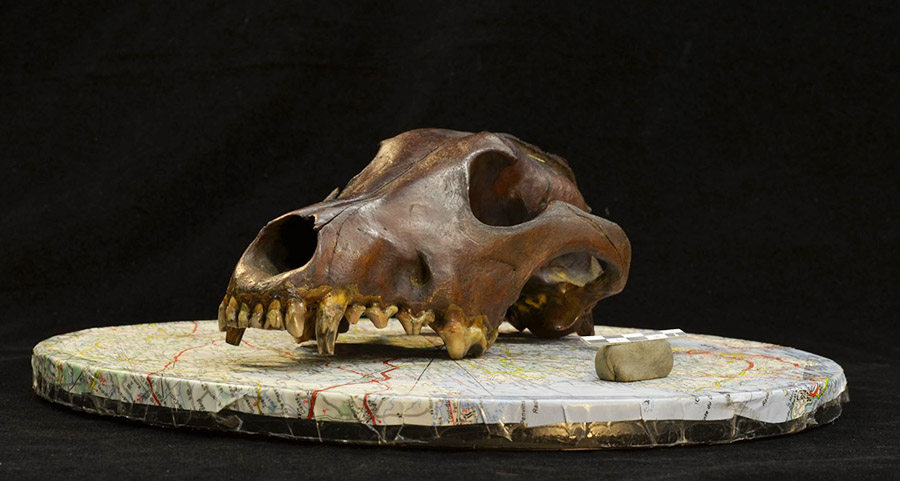
New research shows that domestic dogs began diversifying at least 11,000 years ago, long before modern breeding. A major archaeological investigation has uncovered when domestic dogs first started developing the wide range of shapes and sizes familiar today.
Your Dog Has a Unique Ability to Read Your Mind Science Alert - August 21, 2025

Your dog tilts its head when you cry, paces when you're stressed, and somehow appears at your side during your worst moments. Coincidence? Not even close. Thousands of years of co-evolution have given dogs special ways to tune in to our voices, faces and even brain chemistry. From brain regions devoted to processing our speech to the "love hormone" or oxytocin that surges when we lock eyes, your dog's mind is hardwired to pick up on what you're feeling.
How Do Dogs Perceive The World? It All Starts With The Nose Science Alert - April 6, 2025
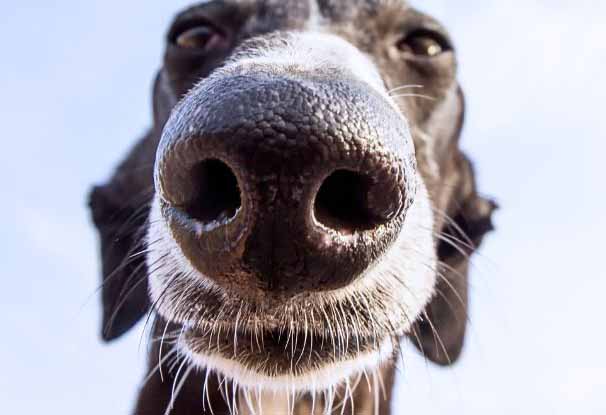
Scent is how dogs largely experience the world, a lot like the way we humans rely on sight. We know little about how dogs interpret scent, but thanks to a recent study, we may be getting closer to understanding what a dog's nose actually knows.
Dogs Can Smell Our Stress, And It Affects Them Deeply Science Alert - July 26, 2024

Dogs can smell human stress, and a new study reveals the scent may trigger a similar emotional effect in dogs, prompting them to make 'pessimistic' decisions.
Video: Meet the world’s tallest dog, a Great Dane named Kevin - June 14, 2024
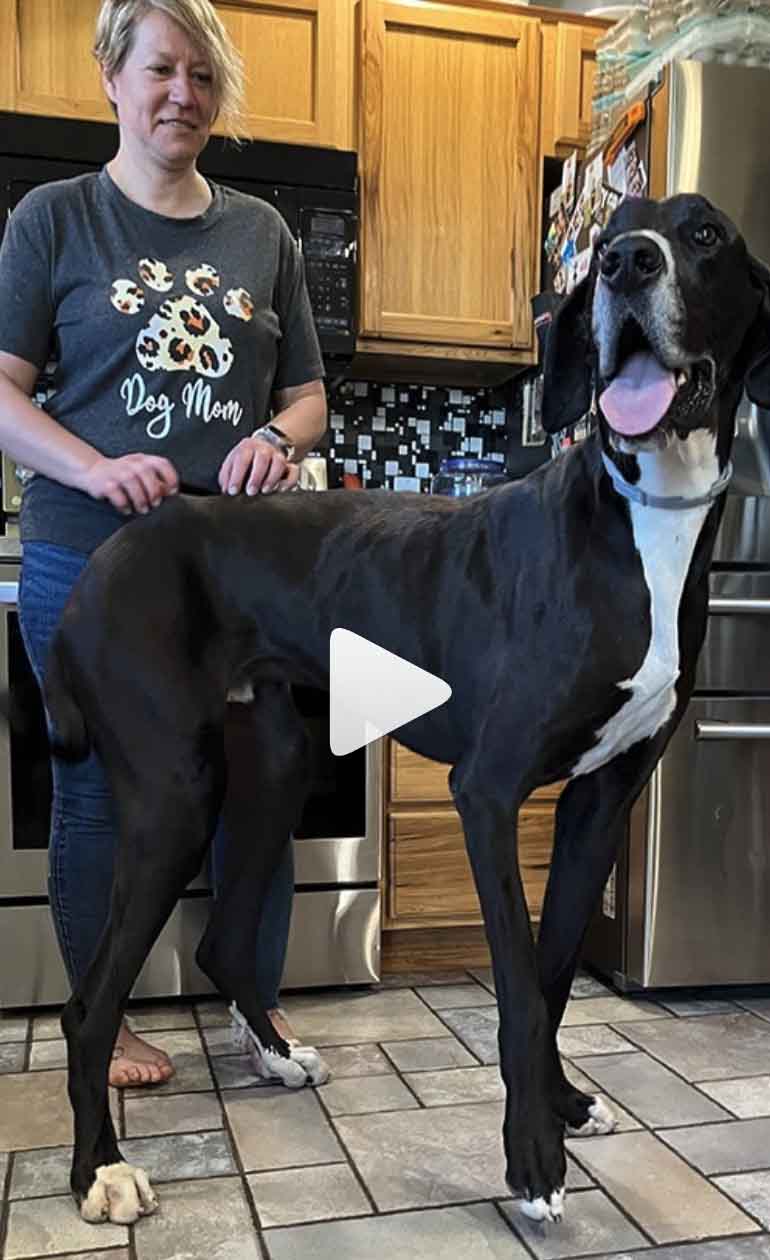
The world's tallest living dog also happens to be a big softy. On June 13, Guinness World Records announced that a 3-year-old Great Dane named Kevin has been verified as the world’s tallest living dog. The canine from West Des Moines, Iowa, measures 3 feet, 2 inches tall and has loads of sweet quirks that have led his owners to describe him as a big baby.
Great Dane ‘Kevin’ Declared World’s Tallest Living Dog Yahoo
'Puppy eyes' didn't evolve just for humans, study of wild dogs finds Live Science - May 20, 2024
A new study debunks the idea that domestic dogs specifically evolved puppy dog eyes to tug on our heartstrings.
Genetic quirk in 25% of Labrador retrievers can lead to overeating, obesity Live Science - March 8, 2024
Retrievers are known to be food-motivated dogs, but a gene mutation found in some of these pups causes them to have not only an insatiable appetite but also lower metabolism, a combination that can lead to obesity, a new study finds. This "double whammy" is caused by a mutation in the POMC gene, which plays a role in satiety by alerting the brain of hunger
Your dog's genes, but not necessarily its breed, play a big role in its behavior Live Science - December 8, 2022
A dog's breed may not dictate its behavior, but genes do play a role, a study of the genomes of 4,000 purebred, mixed-breed and wild dogs has revealed.
Dogs are more attuned to actions in their environment rather than to who or what is doing the action PhysOrg - September 16, 2022
Fascinating Study Gives a Unique Glimpse Into How Dogs See The World Live Science - September 16, 2022
Dogs are way more visually attuned to actions, rather than who or what is performing those actions. This could be an important piece of the canine cognition puzzle, since it reveals what a dog's brain prioritizes when it comes to vision.
Labrador retriever tops American Kennel Club's annual list of most popular dog breeds CNN - March 20, 2022
1. Labrador retriever
2. French bulldog
3. Golden retriever
4. German shepherd
5. Poodle
6. Bulldog
7. Beagle
8. Rottweiler
9. German shorthaired pointer
10. Dachshund
Who's a clever boy? Dogs are able to detect speech and distinguish between different languages, study finds Daily Mail - January 6, 2022
Dogs are able to recognize the difference between speech and gibberish and can even distinguish between familiar and unfamiliar languages, a study has found.
Dogs Understand an Average of 89 Unique Words And Phrases, New Research Shows Science Alert - December 10, 2021
The way dogs have come to understand the nuances of human language is incredibly impressive for an animal that doesn't speak words itself. Just a fraction of a second after we start saying a word - like 'walk' or 'treat' - dogs can predict and respond to what we are trying to say. To some extent, they can even understand the tone of our voice.
Dogs process numerical quantities in similar brain region as humans Science Daily - December 20, 2019
Dogs spontaneously process basic numerical quantities, using a distinct part of their brains that corresponds closely to number-responsive neural regions in humans.
Early-life exposure to dogs may lessen risk of developing schizophrenia Science Daily - December 19, 2019
Ever since humans domesticated the dog, the faithful, obedient and protective animal has provided its owner with companionship and emotional well-being. Now, a study suggests that being around 'man's best friend' from an early age may have a health benefit as well -- lessening the chance of developing schizophrenia as an adult.
Calculate Your Dog's Age With This New, Improved Formula Smithsonian - November 19, 2019
A study of the epigenetic clock in Labradors shows calculating a dog's age is much more complicated than just multiplying by seven
They have an innocence about them ...
Dogs Evolved a Special Muscle That Lets Them Make 'Puppy Dog Eyes Smithsonian - June 18, 2019
When our canine companions raise their eyebrows, making their eyes look wider, more helpless and baby-like, it seems the facial expression was designed to manipulate human emotion
The evolution of puppy dog eyes Science Daily - June 18, 2019
Ancient Dogs Weren't the Workhorses We Thought They Were Smithsonian - June 18, 2019
Dogs and humans have been buddies for at least 20,000 years. For most of that time, it was thought that the relationship had been primarily about work—not belly rubs and games of fetch. Early dogs had jobs, like pulling sleds in the tundra or hunting with early humans in Jordan. At least, that's what archaeologists suspected based on a spinal condition in ancient canine bones called spondylosis deformans, which for decades has been interpreted as a sign that a dog engaged in carrying or pulling. But a new study published in the journal PLOS One calls that idea into question, suggesting that the spine issues are a sign the dogs lived long, healthy lives.
Evidence of dogs accompanying humans to Europe during Neolithic PhysOrg - October 17, 2018
A team of researchers from across Europe and Israel has found evidence of dogs traveling with people from the Near East to Europe during the Neolithic. In their paper published in the journal Biology Letters, the group describes their genetic study of dogs living in ancient Europe and the Near East and what they found. Prior research has shown that dogs were living in both the Near East and Europe prior to the Neolithic. They were, in fact, the only domesticated species already present in Europe when the Near Easterners arrived. Now, the researchers in this new effort have found evidence of dogs traveling with people as they moved from the Near East to Europe and subsequently mated with the dogs already living there.
The secret of Siberian huskies' piercing blue eyes: Researchers discover gene mutation is responsible in groundbreaking dog DNA study Daily Mail - October 6, 2018
Siberian huskies are among the most prized dogs in the world thanks to their piercing blue eyes. And it is all down to a gene mutation that gives the iconic sled dog its famous hypnotizing stare, according to new research. It was identified after scientists compared the genomes of more than 6,000 dogs in the first study of its kind. The much loved breed carries the variant in a section of DNA that carries genetic information known as 'canine' chromosome 18.
Scientists find first evidence DOGS were traded among the Mayan civilization 2500 years ago - and the pups were prestigious gifts that people liked to 'show off' Daily Mail - March 19, 2018
Researchers have found the first evidence of live dogs being traded in the Americas - and they were exchanged over distances of more than 100 miles (160km). The Maya were trading live dogs in 400BC from Ceibal in Guatemala, which is one of the earliest ceremonial sites from the Mesoamerican civilization, researchers found. The bones were largely found in the ceremonial centre meaning the animals were probably owned by someone important or could have even been a prestigious gift. These traded dogs - which were probably slightly bigger than chihuahuas - were older than dogs for eating and were thought to be treated better too.
Team reports first evidence of live-traded dogs for Maya ceremonies PhysOrg - March 19, 2018
Ancient grave containing the remains of a dog suggest humans shared an emotional bond with canines 14,000 years ago - and even took care of them when ill Daily Mail - February 8, 2018
Scientists now believe that a previously discovered dog that was buried 14,000 years ago was sick for weeks and cared for by its owner before its death.
The world's first images of dogs are found on 8,000-year-old rocks in Saudi Arabia - and they're wearing leashes Daily Mail - November 20, 2017
It seems that man's best friend has been leashed by humans for more than 8,000 years, if newly-discovered rock art is to be believed.
Archaeologists have uncovered the image of a hunter drawing his bow surrounded by a pack of 13 dogs, two of which appear to be tethered, carved into ancient sandstone. The find, made in the Arabian Desert, is thought to be the oldest ever depiction of a dog, as well as such restraints being used to control them. Until now, the earliest evidence came from a wall painting in Egypt which is believed to date back around 5,500 years.
Modern domestic dog has a single geographic origin PhysOrg - August 7, 2017
By analyzing the DNA of two prehistoric dogs from Germany, an international research team has determined that their genomes were the probable ancestors of modern European dogs. The study also suggests that all contemporary dogs have a common origin and emerged through a single domestication process of wolves 20,000 to 40,000 years ago.
The origin of man's best friend: Genetic map reveals how different dog breeds evolved around the world Daily Mail - April 25, 2017
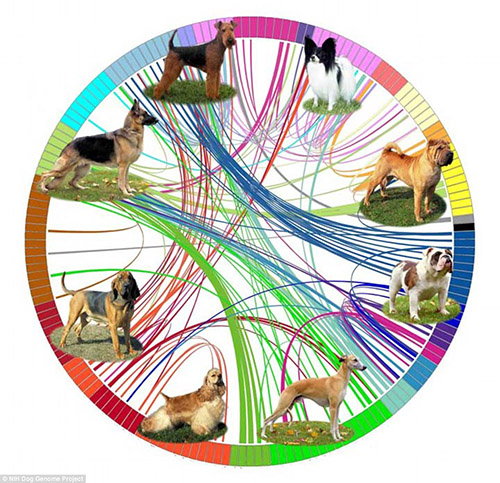
With nearly 400 breeds spanning almost every corner of the planet, dogs have long followed man on his travels.
In a bid to piece together the complex evolution of dogs, researchers have looked at the genetic sequences of 161 modern breeds.
The resulting map unearths new evidence that dogs travelled with humans across the Bering land bridge 15,000 years ago, and will likely help researchers identify disease-causing genes in both dogs and humans.
'Dogs mirror owners' personalities' BBC - February 15, 2017
The idea that a dog takes on the personality of its owner has received scientific support. Researchers in Austria say dogs can mirror the anxiety and negativity of owners. And dogs that are relaxed and friendly can pass this on to humans, perhaps helping their owners cope with stress. More than 100 dogs and their owners underwent various tests, including measurement of heart rate and their response to threat. Saliva samples were also taken to measure cortisol levels, a marker for stress. The owners were then assessed for the big five hallmarks of personality: neuroticism, extraversion, openness to experience, agreeableness and conscientiousness.
Was the First Dog Domesticated in Asia or Europe? Yes NBC - June 3, 2016
People liked dogs so much they invented them not once, but twice. A genetic scan of ancient dogs suggests that humans domesticated pooches separately - once in Europe, and once in East Asia, researchers said. The DNA finding fits in with archaeological evidence that shows dogs on the far east and far west of the Eurasian continent, but not in the middle until thousands of years later.
First Puppies Born by in vitro fertilization Science Daily - December 9, 2015
For the first time, a litter of puppies was born by in vitro fertilization. The breakthrough opens the door for preserving endangered canid species using assisted reproduction techniques. It could also enable researchers to eradicate heritable diseases in dogs.
Dogs 'can trace origins to Central Asia' BBC - October 20, 2015
Today's dogs can trace their origins to Central Asia, according to one of the most comprehensive genetic surveys yet. Dogs are the most diverse animal on the planet - a legacy of thousands of years of selective breeding by humans. But they derive from wild wolves that were gradually tamed and inducted into human hunting groups - perhaps near Mongolia or Nepal.
Giant George - The World's Tallest Dog Has Died ABC - October 24, 2013
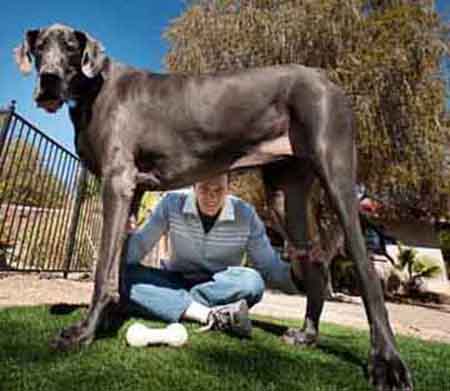
Giant George, verified as the world's tallest dog by Guinness World Records, died one month before his eighth birthday - October 17, 2013.
Giant George was a blue Great Dane previously recognized as the world's tallest living dog, and the tallest dog ever by Guinness World Records. There were originally conflicting media reports regarding his height, but the official measurement showed that he was three-quarters of an inch taller than the previous record holder, Titan (at 43 inches (110 cm) at the withers) and an inch shorter than the current record holder, Zeus.
American Dogs Come From Asia Live Science - July 10, 2013
European colonization of the Americas brought smallpox, starvation and warfare that decimated indigenous populations. But the canine companions that crossed the Bering Strait with the ancient people who first settled the Americas have fared better, according to new research. A new genetic analysis of hundreds of American dog breeds reveals that the canines' ancient roots trace back to Asia. On average, less than 30 percent of their DNA comes from Europe, suggesting dogs came to the Americas with the ancient humans who established pre-Columbian civilizations.
Animal- Human Connection: Crucial in Human Evolution Science Daily - July 21, 2010
It's no secret to any dog-lover or cat-lover that humans have a special connection with animals. But in a new journal article and forthcoming book, paleoanthropologist Pat Shipman of Penn State University argues that this human-animal connection goes well beyond simple affection. Shipman proposes that the interdependency of ancestral humans with other animal species -- "the animal connection" -- played a crucial and beneficial role in human evolution over the last 2.6 million years.
Dog understands more than 200 words BBC - June 11, 2004
A very smart collie dog named Rico has stunned German researchers by learning words with the apparent flair of a young child, Science magazine reports. Rico understands more than 200 words and can work out the meaning of new ones, by a process of elimination. What is more, Rico can often remember new words after a whole month - even though he has only heard them once before, the scientists claim.
Canine family histories revealed BBC - February 14, 2004
All 300 domestic purebred dog breeds fall into one of 10 major groupings, scientists have told a US conference.
A study of genetics and even historical records has revealed how close the breeds are to each other and the order in which they emerged over millennia. Virtually all modern purebred dogs are thought to have evolved from just a handful of grey wolves in Asia about 15,000 years ago. Pressed into the service of humans, they were bred to bring out traits that would help them fulfill certain roles, such as hunting and guarding.
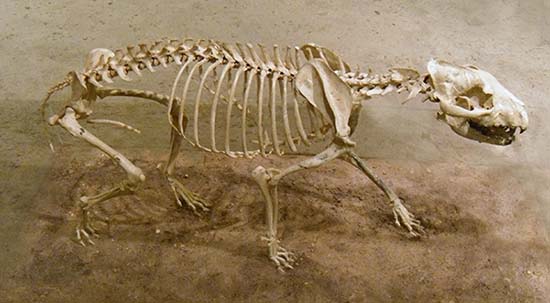
Paleontology

War Dogs